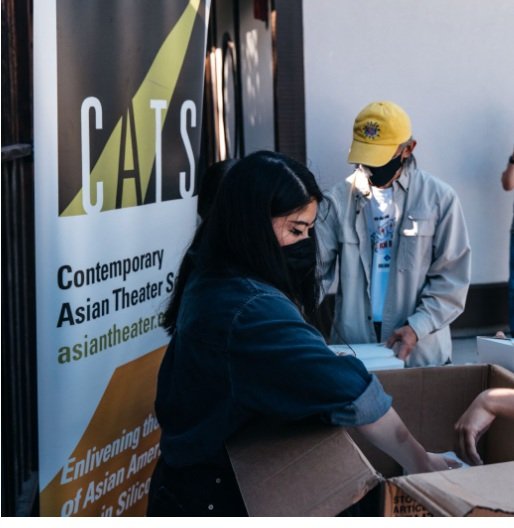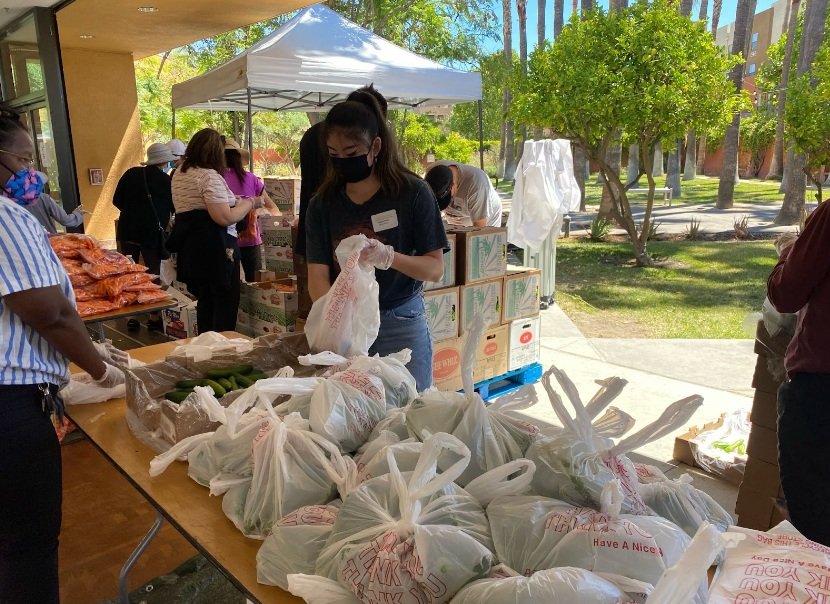Each summer the museum welcomes a Nikkei Community intern for an eight-week program to foster and connect young leaders to San Jose’s Japantown community. In this volunteer spotlight, meet the 2022 NCI JAMsj intern, Jocelyn Maeyama. Jocelyn, who is a Master’s student at Wesleyan University majoring in Psychology, began her internship on June 13. Jocelyn took some time from her busy schedule to chat with me about herself and her journey. Here are some of the things we talked about.
Photo courtesy of Jocelyn Maeyama
Tell us about yourself, Jocelyn.
I was born in Redwood Shores and raised in Los Altos, California. I went to Los Altos High School, then graduated Wesleyan University with a BA in Psychology this past May. I’ll be pursuing my Master’s through Wesleyan’s BA/MA program, and my thesis will be on meaning-making among underrepresented members of the class of 2024 at Wesleyan (the class year that entered college during the pandemic). My professional interests lie in organizational development, specifically in evaluating how organization-wide values impact day to day actions and strategic planning. Outside of academics and professional work, I’m a hip hop dancer, experimental poet, rock climber, and ex-journalist. I also spend a lot of my time writing, thinking, and holding conversations about community and care. Particularly as someone who holds multiple marginalized identities, I consider understanding how to survive within and build outside of oppressive systems urgent work. A lot of that has its grounding in care, both at the self and interpersonal levels, so that tends to be my north star in everything I do.
For readers who may be unfamiliar with hip hop, what are some resources you can point them to?
I would recommend watching this short documentary with Sophia Chang, former manager of A Tribe Called Quest and members of Wu-Tang Clan, among other artists who were influential in shaping the hip hop scene in the 1980s and 1990s. She was the first Asian woman in hip hop, and in this documentary she talks about how she discovered hip hop and how she got started in her career, along with her experiences sharing her culture with Wu-Tang and learning from their culture as well.
You mentioned that you also do experimental poetry. Can you talk a little more about that?
I started writing poetry when I was 15, and I’ve always been drawn to more experimental styles. Some of my favorite poets in this genre are Danielle Vogel (who I’m incredibly lucky to call my mentor), fahima ife, and Layli Long Soldier. Experimental poetics, to me, challenge our relationship with language and make visible our associations with different words and word arrangements. Experimental poetry provides a really beautiful interruption in how we use language, and I’ve carried the lessons I’ve learned through this art form into every area of my life.
Why did you apply to be a Nikkei Community intern?
As a Gosei growing up without a lot of other Japanese Americans in my hometown, I didn’t really explore what it meant to be Japanese American until I started learning more about my family history through my grandfather, Howard Kakita. He is a sansei kibei, and also a hibakusha (atomic bomb survivor). A few years back we began working on writing up his life story and experience surviving the atomic bombing of Hiroshima. He currently gives talks about his experience, and he is one of the last few hibakusha who are both young enough to still give talks and old enough to remember what it was like to survive the bombing. His dedication to sharing his story to educate people inspired me to learn more about my family history and about Japanese culture and history in general. I took classes on Japanese culture and history at Wesleyan, but I still felt like I was missing a sense of JA community. I saw the NCI program as a way that I could connect with the JA community in San Jose and subsequently learn where I could best apply the skills I’ve developed to support the JA community. Since my personal ties to the JA community/JA identity come from historical roots, I was particularly interested in working with JAMsj to understand the work that organizations are doing to preserve and share JA history.
What projects did you work on at JAMsj this summer?
This summer, I worked with the grant writing team and the marketing team. For the grant writing team, I worked with JAMsj’s new Executive Director Taline Mitten to put together a letter of inquiry for new, accessible signage for the museum. On the marketing side, I’m generating a survey for visitors at the museum so JAMsj can receive feedback about how visitors experience the museum. I hope that the survey can benefit not just the marketing team but other areas of the museum as well, so I’ve been interviewing different key people at JAMsj to understand what questions they would like to ask visitors. I also hope that data from this survey can be used by both board members and even serve as a foundation for future JAMsj NCI projects.
Contemporary Asian Theater Summer Reading at JAMsj
Photo taken by Chip Hayashi
Mexican Heritage Plaza Second Harvest Food Distribution 7/13 Roy Hirayabayashi
Photo taken by Kohei Tsuchitani
NCI interns work for a specific entity, but they also gather with other interns. What are some of the activities you did with the other interns?
With the other two San Jose NCI interns, Kohei Tsuchitani and Jackson Thompson, I’ve gotten to meet with many people in the San Jose Japantown community who have shaped (and continue to shape) the JA community here. From these meetings, we’ve heard a wide variety of perspectives on the SJ Japantown community and different ways that members of the community first became involved. Everyone we’ve talked to has been so passionate about the community, whether they’ve been involved their entire lives or recently begun forming ties to the community. These meetings have taught me so much about the way the community functions together, the challenges and triumphs experienced by SJ Japantown, and what sets SJ Japantown apart from the other Japantowns. The most representative example of this was probably this year’s Obon. Pam Yoshida from JCCsj graciously hosted us for the afternoon, and she introduced us to many different people who contribute to keeping the community running. Also, as the first Obon back in person since the beginning of the pandemic, and also following the wave of anti-Asian hate crimes related to the pandemic, it was incredible to see the community come together, reconnect, and make space for tradition and joy.
What advice would you give to 2023 NCIers?
First off: congratulations for being selected! My main advice would be to use your time to develop and learn about your individual strengths while in your placement. I was incredibly lucky to work at JAMsj with Gordon Smith and Chip Hayashi on grant writing and marketing projects respectively, and both of them encouraged me to take on projects and tasks that would develop my professional skills and interests. In doing so, I feel like I’ll be concluding the NCI program having honed skills that I came into the program with, like interviewing and helping people feel at ease, and also having begun to build new skills, like grant writing. Focusing on my strengths (instead of just areas for growth) has also helped to mitigate a lot of imposter syndrome and allowed me to work as a better team member alongside my co-interns through understanding both my strengths and theirs.
What influence has the museum had on you that you will carry with you in the next steps of your journey?The museum has taught me so much about what it takes to keep history alive and continue to educate people. It has been such an honor to work with people who care so much about the museum and its mission and who are of multiple different backgrounds, ages, and experiences. I will carry these perspectives with me throughout the next steps of my journey, and I also hope to continue to stay involved with the museum remotely as I return to school.
Jocelyn’s last day is August 5th. Thank you to Jocelyn for sharing her story with us. And JAMsj also thanks Jocelyn for her commitment to the NCI program this summer and looks forward to working with her again in the future!
By Lynda Gomi



